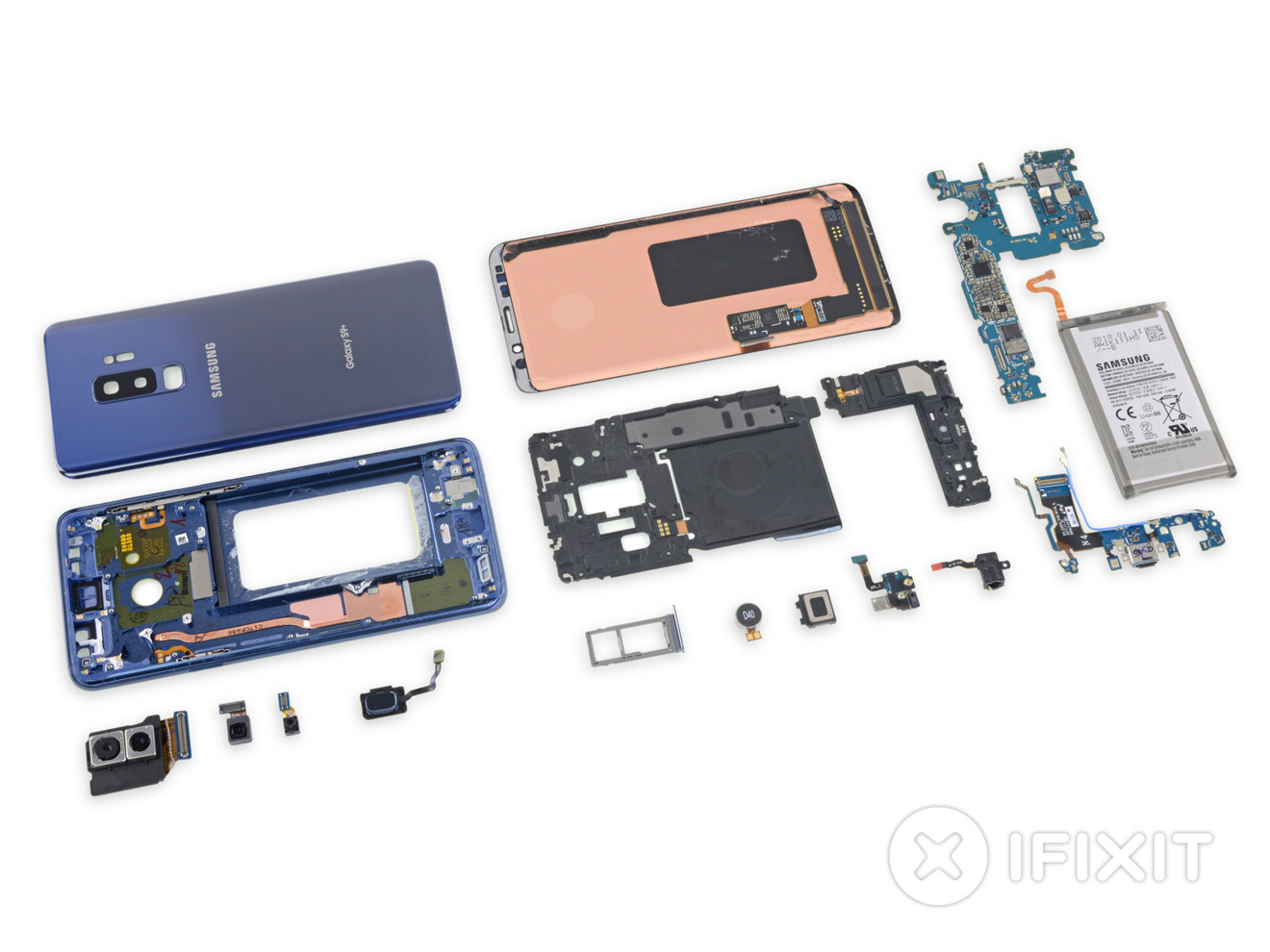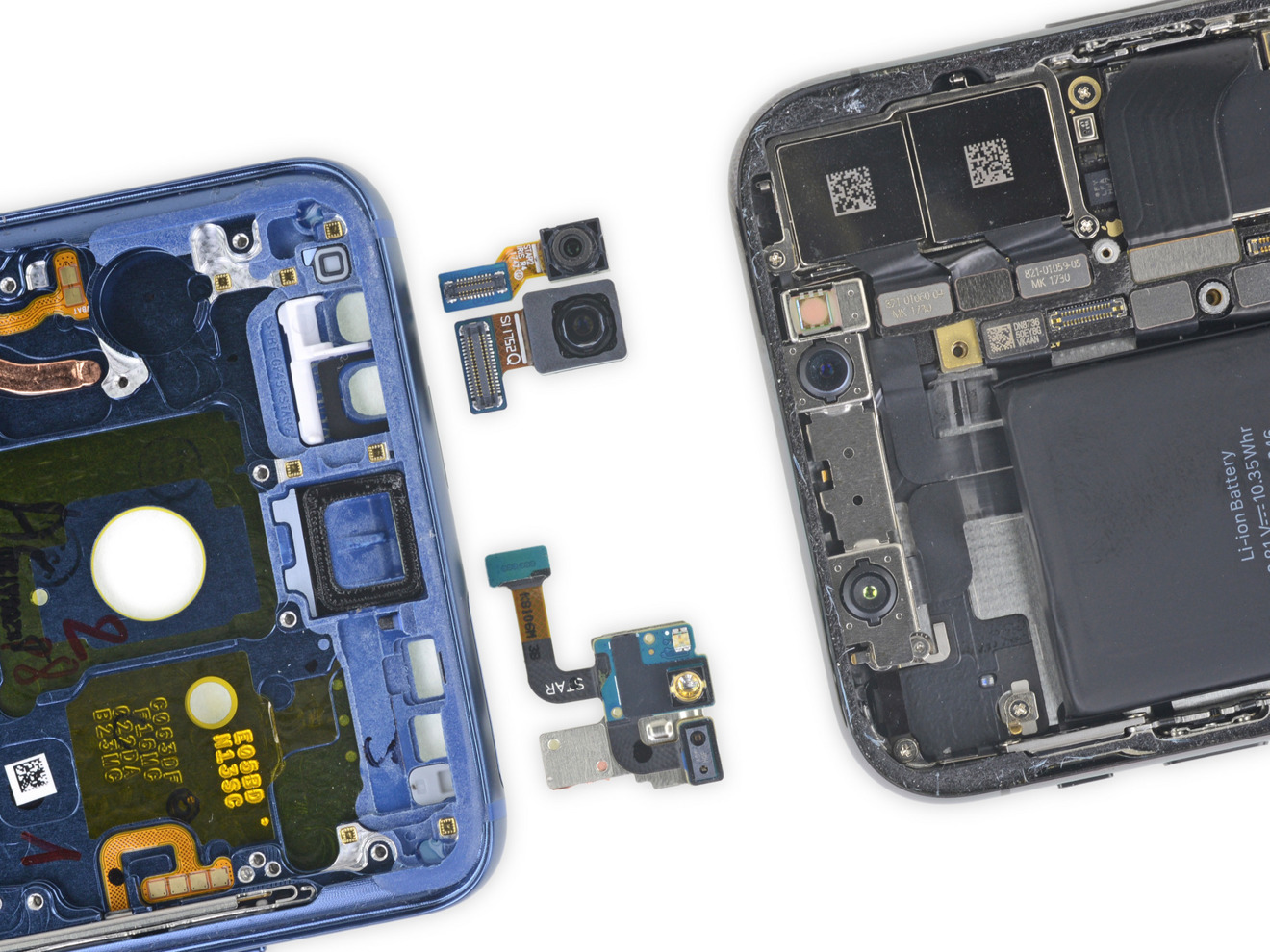Samsung Galaxy S9+ repair difficulty, camera aperture details exposed in teardown
The similarity between the Samsung Galaxy S9+ and its predecessor are not limited to just the external design, as a teardown of the firm's flagship smartphone reveals its internal construction bears more than a passing resemblance to the Galaxy S8, and is just as difficult to repair.
The teardown of the Galaxy S9+ by iFixit starts off with the use of a heat gun and suction cups to open the back panel, revealing the internal construction to be remarkably similar to the Galaxy S8+. The position of components, including the battery and the shapes of circuit boards, are quite similar to the hardware elements used in last year's iteration, albeit this time with higher specification parts.
The new variable aperture rear camera introduced in this model, which can switch between f/1.5 and f/2.4 for one sensor, is revealed to use a pair of rotating rings that move into place when required. While this doesn't use the standard multiple camera blade system that can allow for many different f-stop adjustments, this method limits the selection to just two positions, but does so while taking far less space than if blades were used.
Taking apart the rest of the smartphone revealed to be a challenge for the iFixit team, due to the heavy use of glues to keep components in place and for water resistance. Many parts were able to be extracted intact, but the battery's high glue usage required adhesive removal liquid to pull the part safely.
The list vendors providing chips located on the motherboard is almost the same as the Galaxy S8+, with barely any changes to the lineup. The component producer list includes Samsung itself for the memory, Qualcomm, Toshiba, Maxim, Murata, NXP, Avago, and Skyyworks.
It is noted the battery is a 3.85V, 3,500mAh, 13.48Wh unit, which is the same specification as the version used in the Galaxy S8+ and the infamous Note 7.
The assembly of components on the front of the Galaxy S9+ used to power its Intelligent Scan security is apparently the same as the biometric-related components used in the S8+, consisting of an iris scanner, front-facing camera, IR emitter, and proximity sensor. While it is compared to the 3D-scanning Face ID system and True Depth camera assembly used in Apple's iPhone X, it seems that the Intelligent Scan is purely a software-based security upgrade rather than hardware.
The teardown report suggests it may have been overly ambitious for Samsung to attempt to take on Animoji with its own AR Emoji "without a hardware update to bring it up to speed" with the rival iPhone X.
The Samsung Galaxy S9+ has been awarded a "repairability" score of 4 out of a possible 10, equalling the S8+ but failing to beat the iPhone X's 6 out of 10. While it scores points for being modular, allowing for the independent replacement of components, the tough disassembly caused through the heavy use of adhesive as well as the higher risk of glass breakage worked against the device.
 Malcolm Owen
Malcolm Owen












 William Gallagher
William Gallagher
 Christine McKee
Christine McKee
 Michael Stroup
Michael Stroup
 William Gallagher and Mike Wuerthele
William Gallagher and Mike Wuerthele


 Chip Loder
Chip Loder
 Andrew Orr
Andrew Orr






